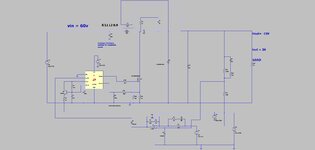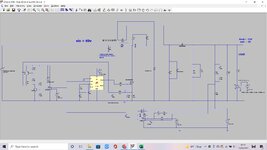cupoftea
Advanced Member level 5
Hi ,
The attached coupled inverting Cuk gives -15V 2A from 60Vin.
It looks great because the coupling can be poor and widely variant and it makes little difference......also, there is no clamp overvoltage like you get in a flyback....no overvoltage ringing on the diode.
So whats wrong with it?
Why is it very little used?
I must admit theres a risk of the opamp input getting -0.7v on it....so would need an opamp tolerant of that.
The attached coupled inverting Cuk gives -15V 2A from 60Vin.
It looks great because the coupling can be poor and widely variant and it makes little difference......also, there is no clamp overvoltage like you get in a flyback....no overvoltage ringing on the diode.
So whats wrong with it?
Why is it very little used?
I must admit theres a risk of the opamp input getting -0.7v on it....so would need an opamp tolerant of that.

